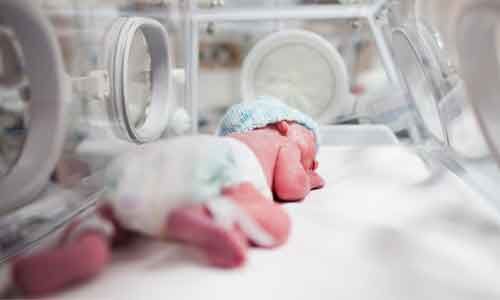- Home
- Medical news & Guidelines
- Anesthesiology
- Cardiology and CTVS
- Critical Care
- Dentistry
- Dermatology
- Diabetes and Endocrinology
- ENT
- Gastroenterology
- Medicine
- Nephrology
- Neurology
- Obstretics-Gynaecology
- Oncology
- Ophthalmology
- Orthopaedics
- Pediatrics-Neonatology
- Psychiatry
- Pulmonology
- Radiology
- Surgery
- Urology
- Laboratory Medicine
- Diet
- Nursing
- Paramedical
- Physiotherapy
- Health news
- Fact Check
- Bone Health Fact Check
- Brain Health Fact Check
- Cancer Related Fact Check
- Child Care Fact Check
- Dental and oral health fact check
- Diabetes and metabolic health fact check
- Diet and Nutrition Fact Check
- Eye and ENT Care Fact Check
- Fitness fact check
- Gut health fact check
- Heart health fact check
- Kidney health fact check
- Medical education fact check
- Men's health fact check
- Respiratory fact check
- Skin and hair care fact check
- Vaccine and Immunization fact check
- Women's health fact check
- AYUSH
- State News
- Andaman and Nicobar Islands
- Andhra Pradesh
- Arunachal Pradesh
- Assam
- Bihar
- Chandigarh
- Chattisgarh
- Dadra and Nagar Haveli
- Daman and Diu
- Delhi
- Goa
- Gujarat
- Haryana
- Himachal Pradesh
- Jammu & Kashmir
- Jharkhand
- Karnataka
- Kerala
- Ladakh
- Lakshadweep
- Madhya Pradesh
- Maharashtra
- Manipur
- Meghalaya
- Mizoram
- Nagaland
- Odisha
- Puducherry
- Punjab
- Rajasthan
- Sikkim
- Tamil Nadu
- Telangana
- Tripura
- Uttar Pradesh
- Uttrakhand
- West Bengal
- Medical Education
- Industry
Urinary Uric Acid Creatinine ratio useful marker of morbidity and mortality of preterm infants

Perinatal asphyxia is one of the main causes of preterm infant mortality. Some studies have shown that The Urinary Uric Acid / Cr (UUA/Cr) ratio may be used as an additional marker for perinatal asphyxia. However, urinary uric Acid / Cr ratio in the first 24 h after birth in preterm neonates who underwent intubation, nasal continuous positive airway pressure or cardiopulmonary resuscitation was higher than healthy neonates, reports a study.
The research is published in the BMC Pediatrics.
The present case–control study was carried on 102 preterm newborn infants with gestational age of 30 weeks to 33 weeks and 6 days admitted in the neonatal intensive care unit. The case group, consisted of 51 premature neonates with a history of intubation, cardiopulmonary resuscitation, mechanical ventilation and Nasal continuous positive airway pressure (NCPAP) at birth, were compared with 51 matched neonates.
The UUA/Cr ratio was measured in the first 24 h after birth. Complications during hospitalization, duration of hospitalization, and final outcome were evaluated. The study showed that the mean level of UUA/Cr ratio in case and control group were 5.4 ± 4.1 and 3.6 9 ± 2.9 respectively and this difference was statistically significant (p = 0.014).
Furthermore, the UUA/Cr ratio were significantly higher in females, cesarean section delivery, Apgar score ≥ 8, neonates without any complication and neonates with less than 10 days of hospitalization. However, this ratio has no predictive value for the incidence of complications during hospitalization and long-term hospital stay for infants of the case group.
As a result, the authors concluded that the UUA/Cr ratio can be a good predictor of increasing the length of hospital stay in healthy preterm infants. However, this ratio has no predictive value for the incidence of complications during hospitalization or long-term hospitalization stay in sick premature newborns.
In order to achieve the predictive role of this ratio for the long-term outcome of patients, it is recommended that cohort studies be designed and implemented in this regard, they further added.
Dr. Nandita Mohan is a practicing pediatric dentist with more than 5 years of clinical work experience. Along with this, she is equally interested in keeping herself up to date about the latest developments in the field of medicine and dentistry which is the driving force for her to be in association with Medical Dialogues. She also has her name attached with many publications; both national and international. She has pursued her BDS from Rajiv Gandhi University of Health Sciences, Bangalore and later went to enter her dream specialty (MDS) in the Department of Pedodontics and Preventive Dentistry from Pt. B.D. Sharma University of Health Sciences. Through all the years of experience, her core interest in learning something new has never stopped. She can be contacted at editorial@medicaldialogues.in. Contact no. 011-43720751
Dr Kamal Kant Kohli-MBBS, DTCD- a chest specialist with more than 30 years of practice and a flair for writing clinical articles, Dr Kamal Kant Kohli joined Medical Dialogues as a Chief Editor of Medical News. Besides writing articles, as an editor, he proofreads and verifies all the medical content published on Medical Dialogues including those coming from journals, studies,medical conferences,guidelines etc. Email: drkohli@medicaldialogues.in. Contact no. 011-43720751


